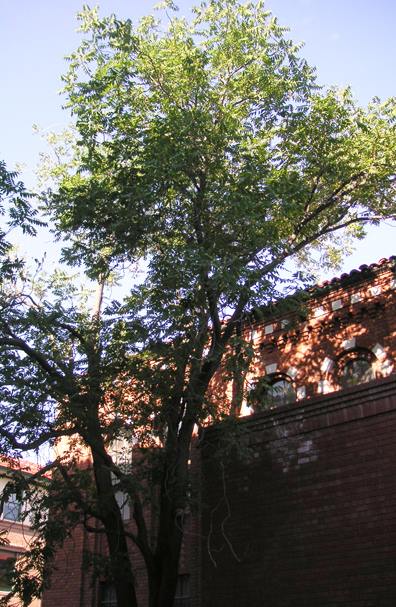 Tree of heaven is listed as a noxious weed in several countries, including the US, Australia, New Zealand, and many countries of central, eastern, and southern Europe.
Tree of heaven is listed as a noxious weed in several countries, including the US, Australia, New Zealand, and many countries of central, eastern, and southern Europe.
It is native to China where it is important culturally, being used medicinally for thousands of years. It was first introduced to the eastern US via England as an ornamental in 1784. It was introduced to the west coast around the time of the California Gold Rush by Chinese miners who settled in California. Unfortunately, it soon escaped cultivation and began to colonize natural areas. It became apparent that it was able to compete so aggressively that it squeezed out other species, replacing communities of plants. How? It is not vulnerable to the new area’s native pests and pathogens. As a young tree it grows rapidly and reproduces quickly via large loads of seeds as well as suckering roots. An individual tree can produce 325,000 seeds per year which are easily wind-dispersed*. It can suppress competition by secreting chemicals from the roots that prevent seed germination of or kill nearby plants. It is also able to withstand pollution and poor soil of cities, allowing it to take over urban areas. Its roots are able to damage sewers and foundations is in search of water. Unfortunately, it is difficult to remove because it re-sprouts quickly after it is cut down. It sounds a little like a super-villan.
The introduction of this tree has caused major degradation of habitat. Despite this fact, this tree’s abilities are astounding. It was able to naturalize in northern Europe after WWI by growing in the rubble of buildings where other plants would not grow. It is also one of the most pollution tolerant trees*. Its leaves absorb significant amounts of sulfur in high traffic flow. It survives fumes produced by coal-tar factories. It can accumulate high levels of mercury in its tissues and is somewhat resistant to ozone exposure. It is able to withstand drought because its roots that are able to store water. It’s amazing what plants can adapt to.
People are working together to control invasive species like this in order to protect biodiversity. Ailanthus is probably best controlled by manual removal of young seedlings. Be sure to pull up the root*.

